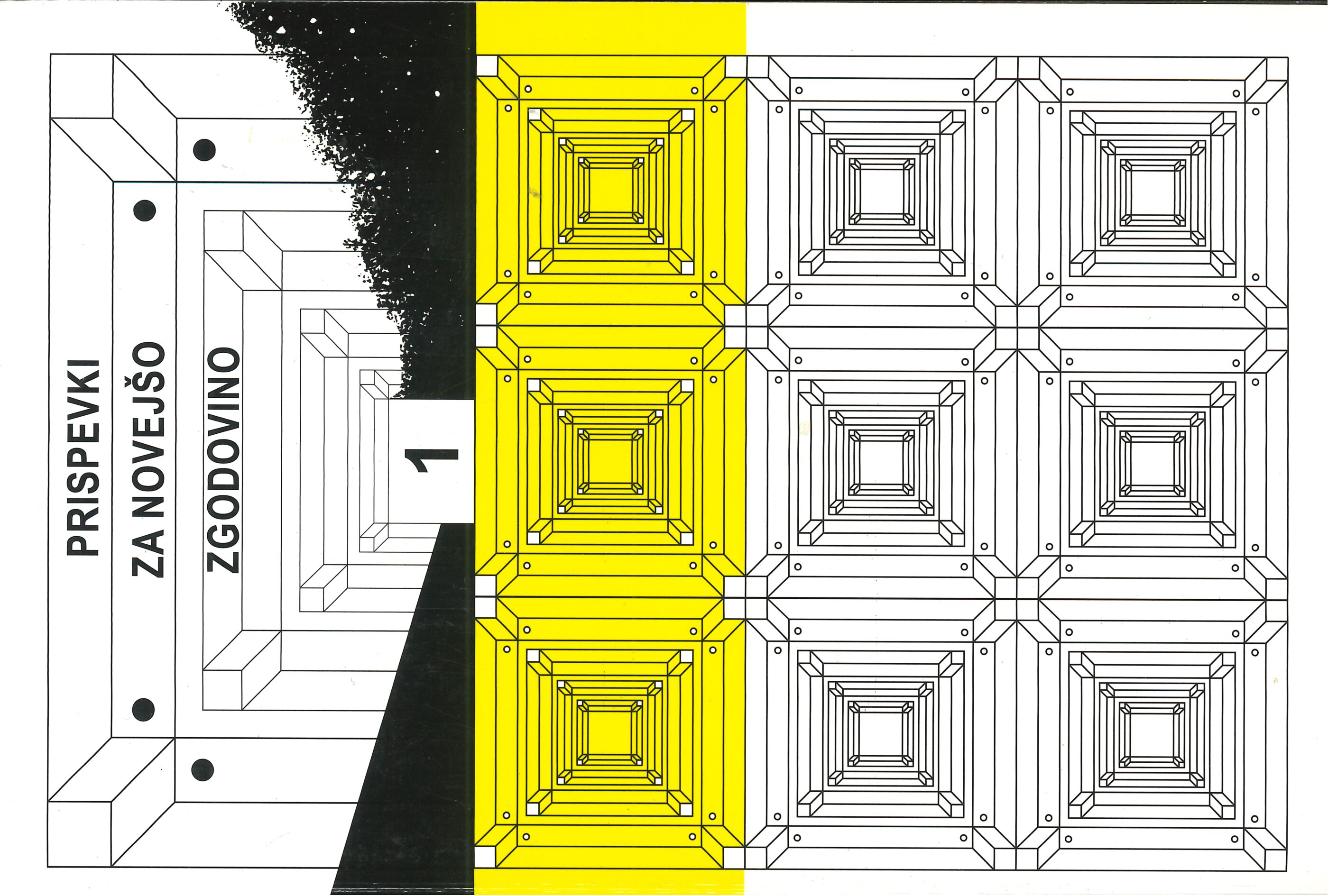»Tod sekla bridka bodo jekla« : arheološko dokumentiranje bojišča prve svetovne vojne ter oborožitev avstro-ogrske in italijanske armade na Rombonu
Ključne besede:
World War I, Rombon, archaeology, Soča Front, battlefield, armamentPovzetek
»HERE BITTER STEEL WILL BITE« – ARCHAEOLOGICAL SURVEY OF THE GREAT WAR BATTLEFIELD AND THE ARMAMENT OF THE AUSTRO‐HUNGARIAN AND ITALIAN ARMY AT ROMBON
The following contribution describes the results of the archaeological survey of the high mountain range battlefield at Mr. Rombon, where the Austro-Hungarian and Italian Armies fought between 1915 and 1917. An analysis of modern aerial photographs, revealing numerous fire and communivcation trenches as well as terraces for military barracks, was carried out, while the field survey involved the photographic documenting and mapping of the various positions with the aid of the global positioning system (GPS). The author shows the situation at the individual selected areas of the former battlefield, and he also focuses on the certain aspects of structuring the military positions and their adaptation to the natural circumstances in the high mountain enviroment. On the basis of selected finds from private museum collections, an analysis and presentation of the armament of the Austro-Hungarian and Italian Armies at Rombon was also carried out. This was one of the few examples of the archaeological research of the Soča Front, which would also deserve more attention from the archaeological science.
Literatura
CIGLAR, J. 2003, Italijanski metalec razstrelilnih cevi »Bettica«. – Na fronti, revija za vojaško zgodovino 2, 62−63.
ČRŠNAR, M, U. Košir, G. Rutar 2013, Raziskave bojišča soške fronte v letu 2012. V: ČREŠNAR, M., B. DJURIĆ, P. STIPANČIČ (ur.) 2013, Arheologija v letu 2012: dediščina za javnost, 13.
HOEN, M. 1931, Geschichte des salzburgisch-oberösterreichischen k.u.k. Infanterie Regiments Erzherzog Rainer Nr. 59 für den zeitraum des Weltkrieges 1914−1918. Salzburg, Rainerbund.
GALIĆ, L., PIRIH, D. 2007, Od Krna do Rombona : 1915−1917. Kobarid: Ustanova Fundacija Poti miru v Posočju.
KLAVORA, V. 2000, Plavi križ: Soška fronta: Bovec 1915−1917. Celovec: Mohorjeva družba, druga dopolnjena izdaja.
KOŠIR, U. 2011, Rombon − arheologija visokogorskega bojišča soške fronte 1915–1917. ‒ Diplomsko delo. Univerza v Ljubljani. Oddelek za arheologijo.
KOŠIR, U. 2012, Potencial arheologije prve svetovne vojne na območju soške fronte / The Potential of First World War Archaeology on the Isonzo Front. – Arheo 29, 53−64.
KOŠIR, U., M. ČREŠNAR, G. RUTAR 2014, Raziskave bojišč soške fronte v letu 2013. V: ČREŠNAR, M., B. DJURIĆ, P. STIPANČIČ (ur.) 2014, Arheologija v letu 2013: dediščina za javnost, 27.
KOVAČIČ, S. 2001, Ročne bombe na soški fronti. – Na fronti, revija za vojaško zgodovino 1, 69–73.
MANTOAN, N. 1999, Armi ed equipaggiamenti dell’esercito italiano nella grande guerra : 1915−1918. Novale − Valdagno (Vincenza): Gino Rossato.
MANTOAN, N. 2001, Bombe a mano Austriache 1914−1918. Gaspari editore, druga izdaja.
MOSHENSKA, G. 2008, Ethics and Ethical Critique in the Archaeology of Modern Conflict. – V: Norwegian Archaeological Review, 41: 2, 159−175.
OFFELLI, S. 2009, Le armi e gli equipaggiamenti dell’esercito austro-ungarico dal 1914 al 1918 : bandiere reggimentali − decorazioni armi e dotazioni individuali. Volume secundo. Valdagno (Vicenza) : Gino Rossato, osma izdaja.
OSGOOD, R., M. BROWN 2009, Digging up Plugstreet. The Archaeology of a Great War Battlefield. Yeovil.
ROBERTSHAW, A., D. KENYON 2008, Digging the Trenches. The Archaeology of the Western Front. Barnsley.
SAUNDERS, N. J. 2000, Bodies of Metal, Shells of Memory. »Trench Art« and the Great War Recycled. – V: Journal of Material Culture, 5(1), 43−67.
SAUNDERS, N. J. 2002, Excavating memories – archaeology and the Great War, 1914–2001. – V: Antiquity 76, 100–108.
SAUNDERS, N. J. 2003a, Trench Art. Materialities and Memories of War. Berg, Oxford, New York.
SAUNDERS, N. J. 2003b, Crucifix, Calvary, and Cross – Materiality and Spirituality in Great War Landscapes. – V: World Archaeology, Vol. 35, No. 1, The Social Commemoration of Warfare, 7−21.
SAUNDERS, N. J. 2010, Killing Time. Archaeology and the First World War. Stroud.
SAUNDERS, N. J. 2011a, Trench Art: a brief History & Guide, 1914–1939. Barnsley.
SAUNDERS, N. J. 2011b, First World War Archaeology: Between Theory and Practise. – V/In: F, Nicolis, G. Ciurletti, A. De Guio (ur./ed.), Archeologia della Grande Guerra. Atti del Convegno Internazionale 23/24.06.2006 Luserna, Trento / Archaeology of the Great War: Proceedings of the International Conference, Trento, 37–46.
SAUNDERS, N. J., N. FAULKNER, U. KOŠIR, M. ČREŠNAR, S. THOMAS 2013, Conflict Landscapes of the Soča/Isonzo Front, 1915–2013: Archaeological-Anthropological Evaluation of the Soča Valley, Slovenia / Pokrajine konfliktov soške fronte, 1915–2013: arheološko-antropološko ovrednotenje Posočja. − Arheo 30, 47−66.
SIMIĆ, M. 1998, Po sledeh soške fronte. Ljubljana.
STICHELBAUT, B. 2009, World War One aerial photography: An archaeological perspective. ‒ Doktorska disertacija. Univerza v Gentu, Belgija.
ŠVAJNCER, J. J. 2008, Sablje. Logatec : Vojni muzej Logatec.
Prenosi
Objavljeno
Številka
Rubrika
Licenca
Avtorji prispevkov, objavljenih v tej reviji, soglašajo z naslednjimi pogoji glede avtorskih pravic:
- Avtorji ohranijo avtorske pravice, reviji pa odobrijo pravico do prve objave. Delo se hkrati zaščiti z licenco za prosto uporabo avtorskih del (Creative Commons Attribution License), ki drugim osebam omogoča deljenje dela ob priznanju avtorstva in prve objave v tej reviji.
- Avtorji lahko sklenejo ločene dodatne pogodbene dogovore za neizključno distribucijo različice dela, objavljene v reviji, (npr. oddaja v institucionalni repozitorij ali objava v knjigi) z navedbo, da je bilo delo prvič objavljeno v tej reviji.
- Pred postopkom pošiljanja in med njim lahko avtorji delo objavijo v spletu (npr. v institucionalnih repozitorijih ali na svoji spletnih strani), k čemer jih tudi spodbujamo, saj lahko to prispeva k plodnim izmenjavam ter hitrejšemu in obsežnejšemu navajanju objavljenega dela (glej The Effect of Open Access).


